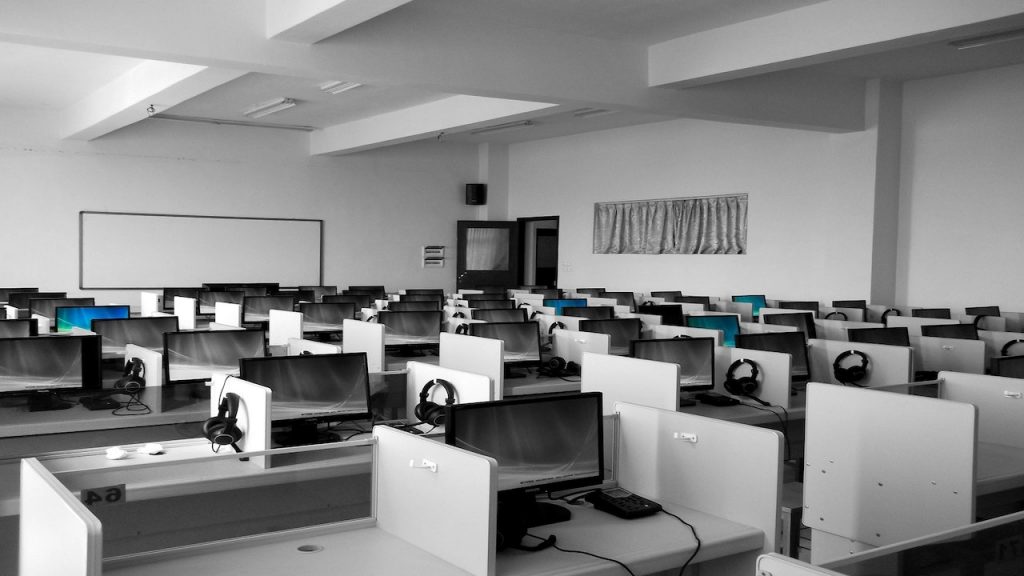5 Lesser Known Office Hazards Covered By An Office Risk Assessment

An office risk assessment is used to make sure the workplace is safe for everyone, whether it’s their usual work environment or they’re visiting an office for a meeting. Office health and safety is something every employer has to keep in mind when staff work in this setting. It is a legal requirement to provide a safe workplace, and your employees will feel better for it.
An office might not be the most dangerous working environment, but there are hazards to be addressed to keep people safe. Some of these are obvious, such as fire hazards, chemicals used for cleaning, or lifting and carrying heavy objects, but other risks are less obvious. It might surprise you to know what exactly is included in office risk assessments, when some of the hazards in an office are a little more hidden.
What Is An Office Risk Assessment?

An office risk assessment is focused on office hazards that are present in the workplace. A health and safety risk assessment will cover general hazards in the business or workplace, but a specific assessment of the area staff physically work in will take a deeper look at any risk or hazard that can cause injury or harm.
Like other risk assessments, this is done by analysing everything identified as a hazard or risk to people, the possible effects an incident might have, and the steps taken to address or mitigate the danger. Office risk assessments should be checked and updated regularly to account for any changes to the environment from new equipment, extra employees, or changes to processes, and to account for lessons learned by any accidents that have occurred.
Why Does Office Health And Safety Matter?
Health and safety in the office is important to make sure employees and visitors are safe at all times. This is required by law, and there are severe penalties for employers found to have neglected this responsibility. These penalties include fines and legal action, which can have further implications for businesses and their owners.
For employees, office hazards can directly impact their health and wellbeing. If staff are hurt at work, they will need time off to recover and this impacts the productivity of the business. There could be payments to make in response to this injury, and it may result in employees leaving the company altogether. This brings hiring and training costs into the equation, and this money could be better spent elsewhere.
Who Should Complete Office Risk Assessments?
It is the responsibility of the employer to complete an office risk assessment to ensure their workplace is safe and suitable for employees and visitors. In organisations with a dedicated HR professional or team, they may complete the assessment on behalf of the employer. However, the employer is still responsible for its findings, actions, and any failures to address the hazards identified.
To improve office health and safety, an employer might work with an external business specialising in health and safety services, like risk assessments or accident investigations, to make sure these tasks are completed to the right standard and without being distracted by other business priorities.
Common Office Hazards
Some of the office hazards covered in an office risk assessment will be obvious, and will include:
- Fire hazards such as blocked fire escapes
- Electrical fixtures, for example faulty wiring
- Wet floors that can lead to trips
- Strong cleaning supplies not being stored away safely

5 Lesser Known Office Hazards
Other hazards are things we don’t consider a cause for concern as they can often be things we expect to encounter in our daily lives.
Office health and safety means it’s the employer’s responsibility to mitigate or address every office hazard, no matter how obvious or obscure it might be. You might find some of the following hazards covered by an office risk assessment surprising, but they will prevent accidents that many of us won’t even think about.
1. Uneven Flooring
Uneven flooring is an office hazard most people don’t think about, as they expect smooth and stable surfaces to walk on. Recording any flooring problems in an office risk assessment makes it easy to plan work to resolve the issue. Uneven flooring can come from:
- Holes in the floor
- Loose tiles or planks
- Torn carpet
- Damaged stairs
As soon as an issue with the floor is noticed, it should be reported and every member of staff made aware. Every effort should be made to fix it quickly to avoid any accidents. These kinds of office hazards are dangerous because they can easily slip the mind, making an accident more likely.
2. Computers, Technology, And Electricals
Computers and technology can be office hazards – especially if they’re not used correctly. Removing or disposing of electrical goods can also be hazardous, depending on the item in question and the condition it’s in. An office risk assessment should cover things like:
- Eye strain from looking at monitors for too long
- Loose or defective wiring
- Faulty equipment
- Replacing parts
DSE regulations can help guide employers on how to monitor the use of display screen equipment in the office to ensure appropriate use for all employees.

3. Loose Wires
Most offices have different technologies for staff to use, from computers and laptops through to phones and printers. All of the wires used to power and connect these devices can create a unique office hazard.
While the layout of desks and location of equipment can help keep these wires focused in certain parts of the office, all it takes is one shoe or bag strap to catch a wire and pull it. This can damage the technology and pull the wires into other areas, where people can trip on them.
An office risk assessment should take into account where desks, technology and the wires go, and how everything will be kept tidy to minimise the chance of people injuring themselves from these items.

4. Ergonomics
With employees sitting at desks for large parts of their day, the risk of developing aches and pains increases with the wrong equipment.
A supportive office chair, a desk at the right height, monitors in line with eye level, and the right posture can help to avoid injuries and aches. Performing an office risk assessment on an employee’s desk and working conditions will ensure they are sitting as comfortably and risk-free as possible. These risk assessments will need to be reviewed regularly to account for any change in an employee’s circumstances – for example, for pregnant workers.
5. Kitchen Equipment
Kitchens can be found in the office and at home, and most people are aware of the hazards certain appliances or utensils pose; for example, boiling water in a kettle.
In the workplace, office hazards include kitchen appliances and utensils. These need to be recorded, as the employer has a responsibility to keep everyone safe, and employees expect basic facilities in the workplace for refreshments.
Sharp knives, boiling water, and other hazards need to be recorded on an office risk assessment, as well as steps taken to reduce the chance of accidents occuring. This might be raising awareness, training, or ensuring items in the kitchen are kept in the best condition.
Make Sure Your Office Risk Assessment Is Done Correctly
Given how important an office risk assessment is, you need to make sure they’re done right. At Rhino Safety, we know that every business owner is busy, but our team of expert health and safety consultants are able to help. We have a wealth of experience in completing risk assessments to improve office health and safety, catching hazards that other people don’t even consider including.
Find out how Rhino Safety can help with your office risk assessments by getting in touch with us today. With our support, you can stay fully compliant with all legislation regarding health and safety in the office.
